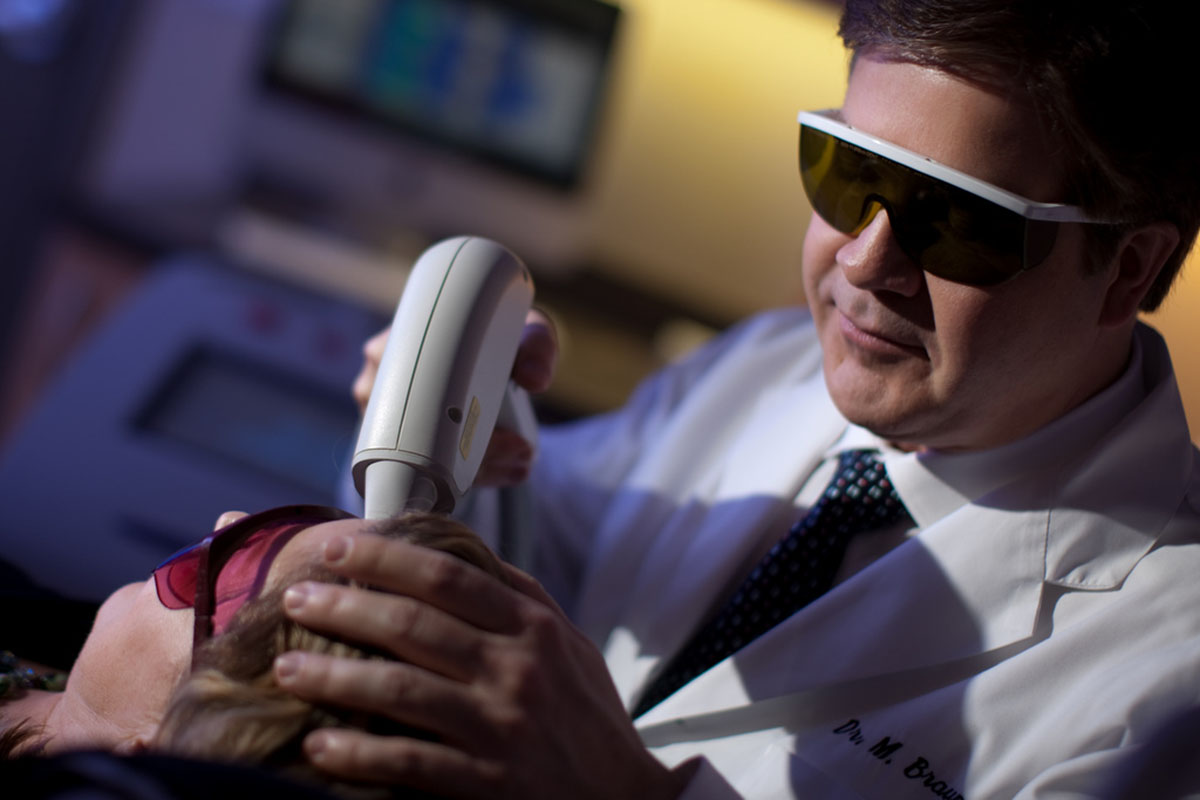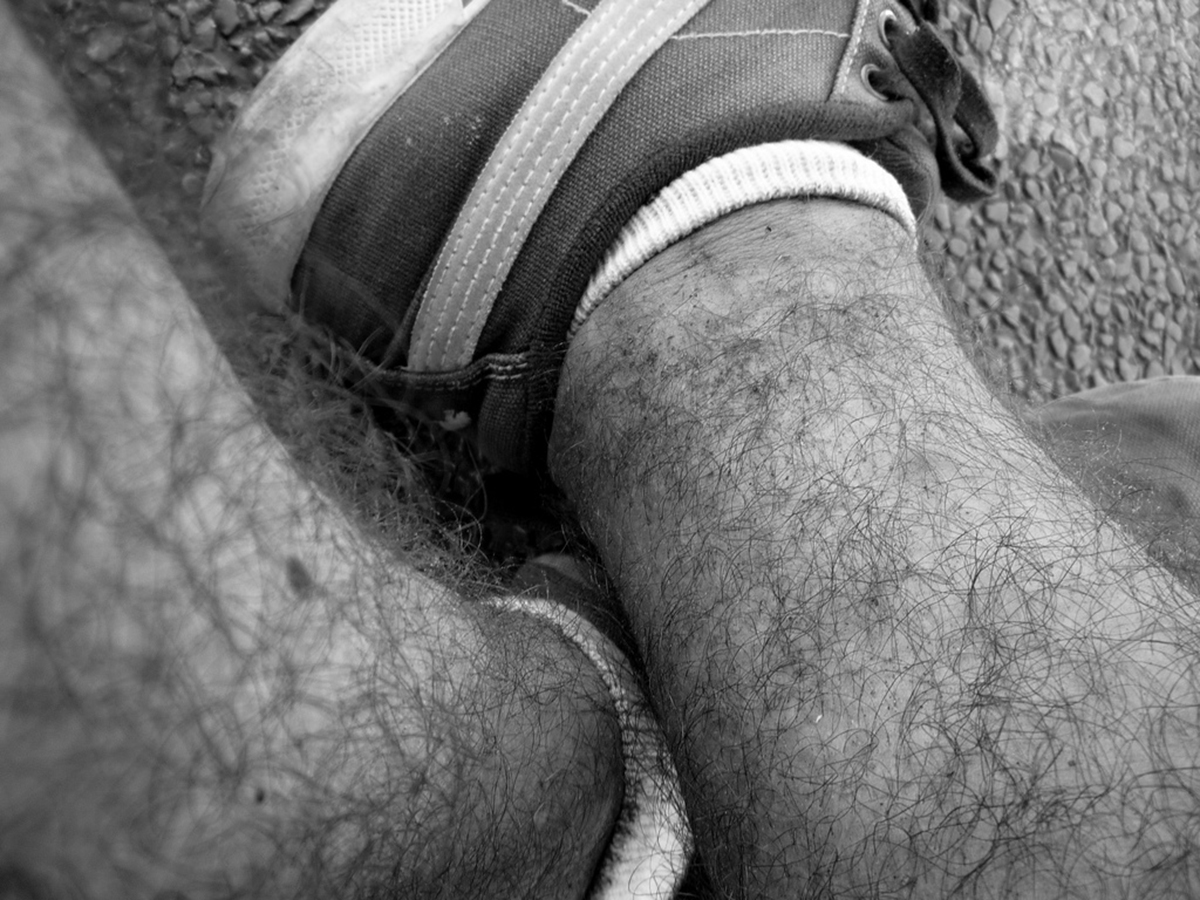Every woman has a certain amount of body hair, but there are those who unfortunately suffer from excess body hair. This isn't about those post-winter hairy legs that have been hidden away in jeans, that's a personal choice. Instead, it is women who for a variety of reasons grow excess hair in areas of their body, especially the face.
Excess body hair is called hirsutism, and it is when dark and coarse hairs grow excessively on the chin, chest, abdomen, above the lip or on the back. The facial hair in particular resembles that of the growth on a man's face, which can lead to ridicule, embarrassment and shame. So why does this happen? The most common cause is polycystic ovarian syndrome, a condition where multiple cysts form on the ovaries and upset the hormone balance. Sometimes hirsutism is purely hereditary, meaning it often runs in families. Often the cause is unknown, but some diseases and conditions should be ruled out, such as tumors of the adrenal gland, cancer of the ovary, Cushing's Syndrome and congenital adrenal hyperplasia. Another cause can be a side effect from certain medications.

Home Remedies
If there is no known underlying cause, it is often recommended that the woman tries to lose weight. Excess hair growth is quite common in overweight women, and by losing the weight the growth of the hair can be reduced.
Some women prefer to bleach the excess hair. This can be easier than trying to remove the hair in some cases and is relatively simple and safe to do. There are many products available for bleaching facial hair in particular, but it is important to try a small area of skin first to check for any reaction to the product.
Shaving is a popular way of removing hair, whether it is with a blade razor or an electric one. There are even shaving creams specially designed for women and their skin. Using a razor is fairly simple, and the only risks involved are tiny cuts or skin irritation. Despite the myths, shaving does not make the hair grow back thicker, but it can cause it to grow back looking darker making it more obvious, so it is not the best method for those with excess hair.
In the last twenty years or so the use of wax has become increasingly popular. In the beginning it was a treatment that was only performed in beauty salons, but now it is readily available for home use. Waxing is effective, but can be rather painful, and eventually the hair will grow back. Make sure you don't do any waxing just before you plan on going out, as the skin will be red and a little swollen.
READ Flashlamps/Intense Pulsed Light (ELP) and Permanent Hair Removal
Another form of hair removal that can be done at home is the use of depilatory creams and lotions. Generally these involve spreading the cream in a thick layer on the hair, leaving it for 5 minutes or so, and then rinsing it off. These creams usually have an unpleasant odor, and they can irritate the skin, especially those with sensitive skin. Also, it may take a few applications to be successful.
Plucking, Medications and Procedures
And there is always the option of plucking. Most women would have had a go at plucking their eyebrows at some point in their life, and for many once is enough! Plucking can be a bit painful, especially in sensitive areas. It is also not an easy task if the hair covers a large area – you would need the patience of a saint to pluck an area larger than an eyebrow!
Medications For Excess Hair
The most common medication used to help control excess hair growth in women is the oral contraceptive. They are effective because they reduce the production of androgen in the ovaries.

Anti-androgens are another type of medication that blocks the androgens from attatching to the receptors, thereby reducing hair growth. If you do decide to use this medication you must be on contraception as there is a risk of birth defects.
Eflornithine is a topical cream that is developed and prescribed specifically for facial hair growth in women. Although it doesn't get rid of the hair, application of the cream regularly reduces the rate of growth.
Hair Removal Methods
The most effective form of removing excess hair is by laser hair removal and electrolysis. These two methods need to be performed by a professional. Laser treatment is only effective on darker hair, so if you are a blonde or a redhead it won't be as effective. This is because the laser works by removing the melanin or dark color in the hair.
Electrolysis involves the use of an electrical current which damages the individual hair follicles permanently. This is the most effective method of hair removal, however, it often requires multiple sessions and is very expensive. There are also risks of swelling and irritation of the skin.
Is One Method Enough?
Usually, to treat hirsutism, you'll require a combination of medications, home remedies and professional treatments. The treatment plan will depend on a number of factors, such as underlying cause, amount of hair that needs to be removed, and the costs associated with professional treatments. But for women afflicted with excess unwanted hair, any option that will be helpful will normally be considered. A woman's face is what is normally noticed first in a social environment, so any form of disfigurement, or disorder, can have a major impact on self esteem and confidence. Excess hair growth can affect going to job interviews, dating, socialisation, and other aspects of day to day life.
READ Unwanted Hair Or STD? Brazilian Waxing Raises STD Risk?
If you suffer from excess hair growth the first thing you should do is talk to your doctor about it. Examinations and tests may be required to try and determine the underlying cause, which will affect which treatment would be best for you. If the growth is sudden, then this definitely needs to be investigated so any potential nasty causes can be ruled out. An important thing to remember is that this affects a lot of women, many more than you could possibly imagine, so there is no need to be embarrassed or feel ashamed. There is a treatment out there that can help, it is just a matter of finding what would be best for you.
- Photo courtesy of Vancouver Laser & Skincare Centre via Flickr: www.flickr.com/photos/vancouverlaser/3900607317
- Photo courtesy of Vancouver Laser & Skincare Centre via Flickr: www.flickr.com/photos/vancouverlaser/3900607317
- Photo courtesy of overthinkingme via Flickr: www.flickr.com/photos/overthinkingme/3511931994


Your thoughts on this